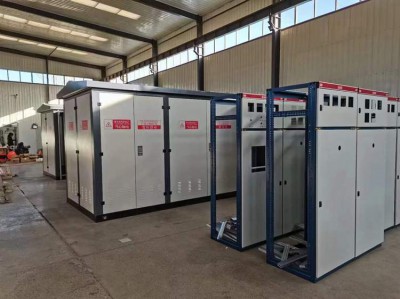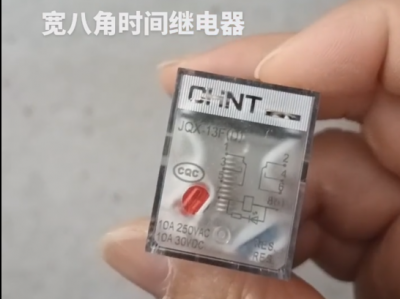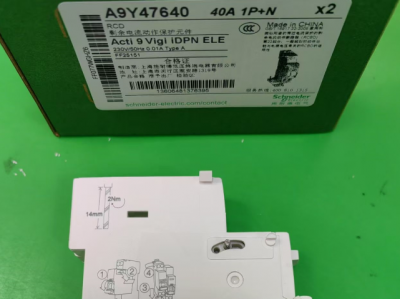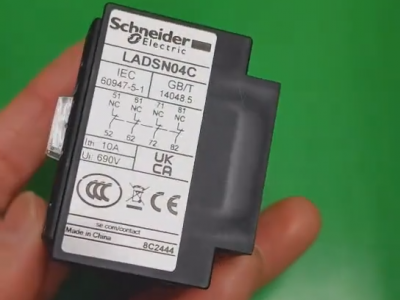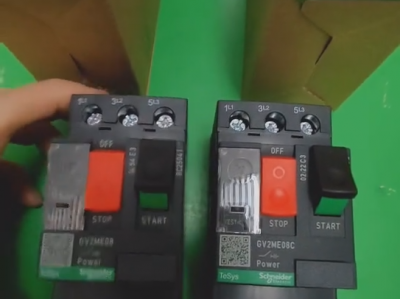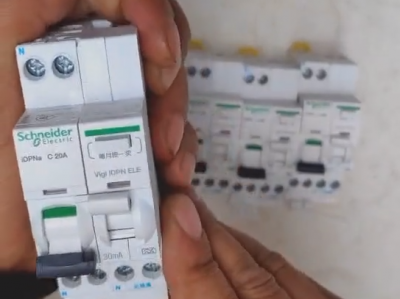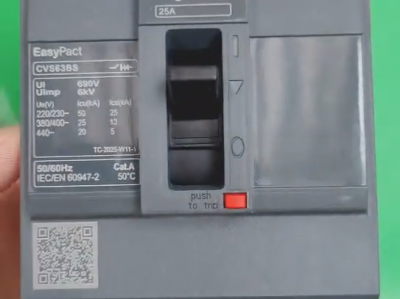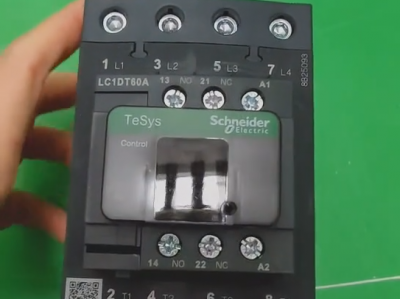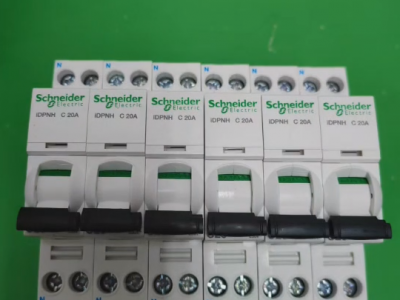Chint's NB1-63DC series DC circuit breakers
Product description
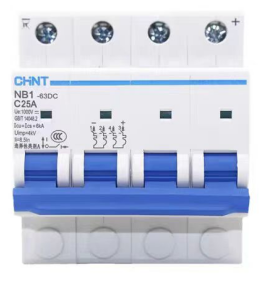
The following is a detailed technical analysis and application guide for Chint's NB1-63DC series DC circuit breakers**. It is compiled in combination with official materials and industry standards, covering core performance, selection key points, and typical scenarios:
I. Core Technical ParametersSchneider Circuit Breakers Price
1. Basic Specifications
| Item | Parameter |
| Rated Voltage | DC 250V, 500V, 1000V (Breaking capacity varies with voltage level) |
| Rated Current | 1~63A (1P/2P/4P optional, Tripping curve: Type C 5-10In, Type D 10-14In) |
| Breaking Capacity | - DC 250V: 10kA (Type C) |
| - DC 500V: 8kA (Type C) | |
| - DC 1000V: 6kA (Type C) | |
| Arc Extinguishing Method | Air arc extinguishing + magnetic blowout technology (Accelerates arc extinguishing through the magnetic field, suitable for DC highly inductive loads) |
| Tripping Characteristics | Overload Protection: Inverse time-limit characteristic, in line with IEC 60947-2 standard. |
| Short-circuit Protection: Instantaneous tripping, Type C (5-10In), Type D (10-14In) |
2. Environmental and Mechanical Performance
| Item | Parameter |
| Operating Temperature | -35℃~+70℃ (Wide temperature design, adaptable to harsh environments) |
| Protection Level | IP20 (Front protection) |
| Installation Method | 35mm standard rail installation (Supports DIN EN 50022) |
| Wiring Specification | Main circuit: 2.5~16mm² single-core/stranded wire (M4 screw) |
3. Certifications and StandardsChint NXR series thermal overload relays price
- **International Certifications**: CCC, CE, EAC, TÜV, CB, SEMKO.
- **Standards Compliance**: GB/T 14048.2, IEC 60947-2, RoHS environmental protection directive.
II. Analysis of Key Features
1. DC-specific Design
- **Arc Extinguishing Optimization**: Adopts magnetic blowout arc extinguishing technology, which quickly stretches and cools the arc through the magnetic field to solve the problem of difficult arc extinguishing in DC circuits.
- **Polarity Protection**: **No built-in reverse connection protection**, and anti-reverse connection function needs to be achieved through an external diode or MOS tube circuit.
2. Intelligent Tripping and Protection
- **Overload Protection**: Bimetallic inverse time-limit tripping, the larger the current, the shorter the tripping time (for example: it will act within 2 minutes at 1.5 times the rated current).
- **Short-circuit Protection**: The electromagnetic trip unit responds instantaneously. Type C is suitable for conventional loads (such as LED lighting), and Type D is suitable for high-impact loads (such as motors).
3. Extended FunctionsCHINT surge protector price
- **Auxiliary Contacts**: Supports external connection of OF (auxiliary contact) and SD (alarm contact) to achieve indication of opening and closing states or remote monitoring.
- **Accessory Compatibility**: Can be equipped with shunt trip units (XF9), undervoltage trip units (MN), etc. for extended functions.
III. Selection and Application Scenarios
1. Selection Guide
1. **Voltage Matching**: Select the corresponding model according to the system voltage (for example, choose NB1-63DC/500V for DC 500V).
2. **Current Calculation**:
- **Continuous Load**: Rated current ≥ 1.2 times the load current.
- **Impact Load**: Type D tripping curve, rated current ≥ (Load starting current / 10).
3. **Breaking Capacity**: Ensure that the breaking capacity (Icu) of the circuit breaker ≥ the system short-circuit current.
2. Typical Applications
| Scenario | Model Recommendation | Configuration Description |
| Photovoltaic String Protection | NB1-63DC/500V C16A | Suitable for 1500V photovoltaic systems (Needs to be derated for use), protects the string from overload and short-circuit |
| Energy Storage System | NB1-63DC/1000V D25A | High short-circuit breaking capacity, protects the battery pack and inverter interface |
| Industrial DC Motor | NB1-63DC/250V D32A | Type D tripping curve, can withstand the starting impact current of the motor |
| Communication Base Station | NB1-63DC/48V C6A | Low voltage and high reliability, protects the power supply of communication equipment |
IV. Installation and Maintenance
1. Installation Key Points
- **Wiring Specification**: The main circuit wiring needs to be tightened to a torque of 6N·m to avoid loose connection and heat generation.
- **Polarity Confirmation**: Connect the positive and negative poles strictly according to the markings to avoid damage to the circuit breaker due to reverse connection.
- **Environmental Requirements**: Avoid using in environments with high humidity (>90%RH) or corrosive gases.
2. Maintenance Suggestions
- **Regular Inspection**: Clean the contacts every quarter and check the flexibility of the tripping mechanism.
- **Life Management**: Mechanical life ≥ 200,000 times, electrical life ≥ 100,000 times (DC-21A load).
- **Fault Troubleshooting**: After tripping, confirm the cause of the fault, and manually disconnect the power supply before resetting.
V. Comparison and Alternative Solutions
| Model | Voltage Range | Breaking Capacity | Features |
| NB1-63DC | DC 250~1000V | 6~10kA | Magnetic blowout arc extinguishing, supports wide temperature environment, suitable for highly inductive loads |
| NB1Z-63 | AC/DC 220~400V | 6kA (AC) | Suitable for both AC and DC, an economical choice with lower breaking capacity |
| NSX400N(Schneider) | DC 1000V | 50kA | High short-circuit breaking capacity, suitable for large-scale energy storage systems, with a higher price |
VI. Precautions
1. **Derating for Use**: When the ambient temperature exceeds 40℃, select the rated current according to **derating 5% for every 10℃ increase**.
2. **Short-circuit Withstand**: The breaking capacity needs to match the system short-circuit current, otherwise it may lead to damage to the circuit breaker or the risk of fire.
3. **Alternative Models**: If a higher breaking capacity is required, Chint's **NB1-63H** (AC) or **NB1-DC** (DC-specific, breaking capacity 15kA) can be selected.
For detailed technical manuals or customized solutions, you can visit [Chint's official website](https://www.chint.net) or contact local technical support.

